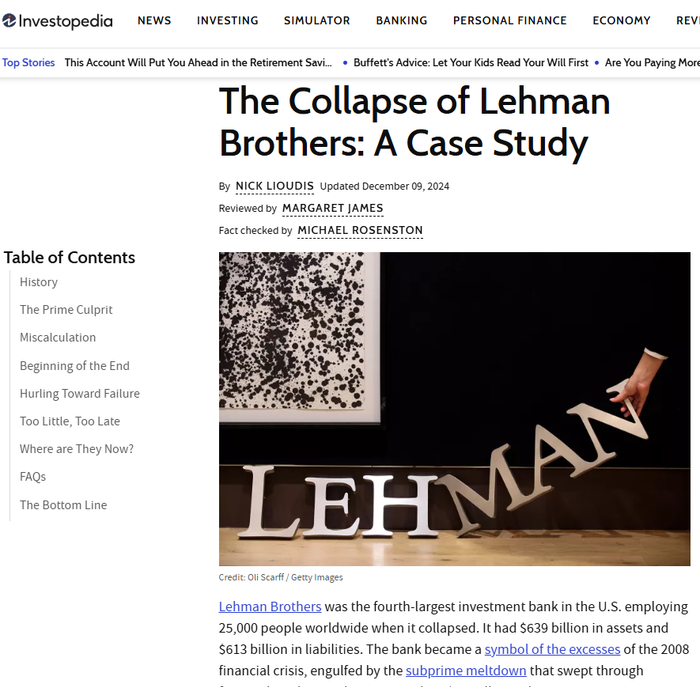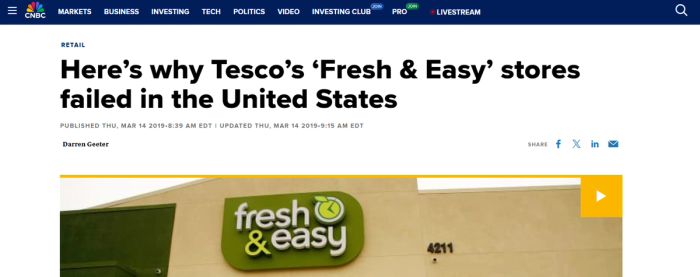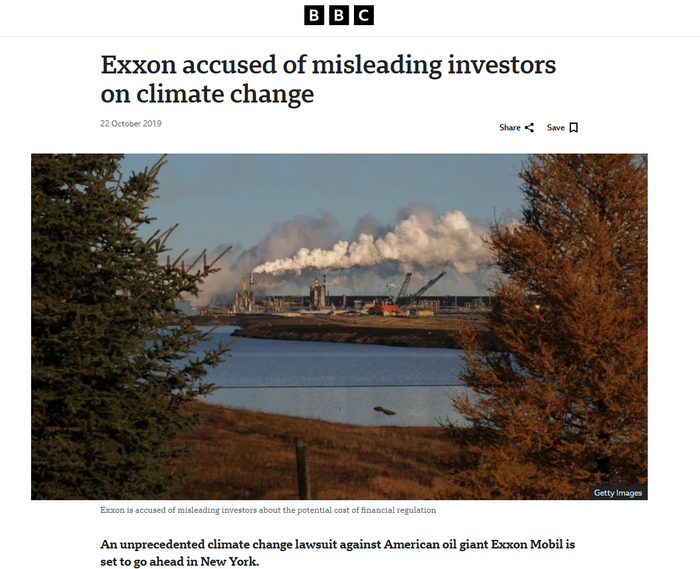What Is PESTEL Analysis? The Strategic Framework for Success
If you want to create a successful business understanding the external environment is the most fundamental thing for strategic decision-making.
PESTEL comes to play at this point. But "what is PESTEL", and how can it help a business adapt its plan to external factors? "PESTEL" refers to a strategic analysis framework that examines the Political, Economic, Social, Technological, Environmental, and Legal factors that can influence a business environment.
PESTEL framework helps businesses to stay flexible, resilient, and competitive.
Strategic management involves creating and sustaining a competitive advantage (Barney and Hesterly, 2017). This pursuit requires organizations to look inward (at resources and capabilities) and, critically, outward toward the forces they cannot control.
The macro-environment refers to the broad external conditions that affect an organization or an entire economic sector. As noted by Hitt et al. (2018), the macro-environment is broad, diverse, and constantly influences economic sectors, providing both potential opportunities (O) and threats (T).
To systematically analyze these external forces, strategists utilize the PESTEL framework. This tool provides a structured, comprehensive approach to diagnosing the external conditions relevant to development, growth, or internationalization claims (Hitt et al., 2018; Peng et al., 2009).
The PESTEL Framework: Foundations and Definitions
"PESTEL" is an acronym representing the six principal segments of the macro-environment:
| P | Political | Government stability, public policies, regulations and political support |
|---|---|---|
| E | Economic | Macroeconomic state, market trends, financial viability |
| S | Social | Cultural attitude, public perception and demographics |
| T | Technological | Innovation rates, R&D investment, and technological acceptance |
| E | Environemental | Ecological policies, climate change concerns, and resource sustainability |
| L | Legal | Statutory requirements, consumer laws, and regulatory frameworks |
PS: PESTEL vs. PESTLE: You may encounter the similar acronym PESTLE (where Legal precedes Environmental). While both frameworks cover the same six factors, the ordering reflects a slight difference in emphasis and historical context.
- Historical Roots (PEST/ETPS): The original tool, PEST, focused primarily on political, economic, social, and technological factors.
- The Rise of Sustainability (PESTLE/PESTEL): As global concerns about climate change, resource scarcity, and corporate social responsibility (CSR) grew, the Environmental and Legal factors were added.
In modern strategic analysis, particularly for industries related to energy, transport, and technology (like those discussed in the provided papers), PESTEL is generally the preferred structure.
Separating the second 'E' as Environmental/Ecological and placing it before Legal (L) emphasizes that ecological mandates (e.g., GHG reduction goals, sustainability protocols) are often the driver of new laws and regulations (L). For example, a country’s commitment to the Paris Agreement (E) necessitates the creation of new tax incentives or emission standards (L).
The segments are tightly coupled. Political and Legal factors are often linked (Castañeda-Ayarza & Godoi, 2020), as are Technological and Environmental factors (Kokkinos et al., 2023). PESTEL clusters the highly modern, driving forces (Technology and Environment) before the resultant formal structures (Legal).
When to Use PESTEL Analysis and Why?
The primary aim of PESTEL analysis is to facilitate strategic deliberation by identifying how macro-environmental forces present Opportunities (which the organization can exploit) and Threats (which the organization must mitigate).
Key Use Cases of PESTEL Analysis:
- Market Entry and Expansion: Essential when entering a new geographic market.
- Scenario Planning: Used to structure inputs for complex models (like the Fuzzy Cognitive Maps in Kokkinos et al.) to explore potential future trajectories (e.g., energy crisis vs. perfect economy).
- Risk Management: Identifying legislative or political instability risks (e.g., the policy change risks faced by WTE projects in China).
- Innovation and R&D Focus: Determining which technological advancements (T) align best with current political mandates (P) and environmental expectations (E).
PESTEL Analysis: Breakdown of Each Letter in the Acronym
A successful PESTEL analysis requires deep documentary research (academic, governmental, industry reports) and, often, expert input, to map the macro-environment's structure (Sousa & Castañeda-Ayarza, 2022).
Political (P)
These factors relate to the extent of government intervention, public policies, and political stability.
Focus Areas: Public policies (tax, trade, tariffs), government stability, organizational support, and regulatory influence on economic sectors.
Strategic Relevance: In regulated sectors (like energy or transport), political factors are determinant opportunities for growth if the government offers incentives or bans competitors (e.g., a ban on fossil fuels). They are a threat if there is political instability, policy ambiguity, or a current crisis (Sousa & Castañeda-Ayarza, 2022).

Political risk and government intervention can drastically reshape business outcomes; failing to fully anticipate or manage political exposures (e.g., nationalization risk) is very dangerous. During the 2008 financial crisis, RBS was nationalized by the UK government after suffering massive losses.
Economic (E)
Economic factors in PESTEL framework relate to the local and national economic health, market indicators, and financial conditions.
Focus Areas: GDP growth, inflation, interest rates, exchange rates, production costs, public/private investment levels, and consumer purchasing power.
Strategic Relevance: These factors define the market’s financial viability. A current economic crisis or high inflation (Sousa et al. found an accumulated 11.72% growth in general prices index in Brazil) acts as a strong threat by reducing consumer willingness to purchase high-cost items (like EVs) and increasing investor risk. Conversely, periods of projected high GDP growth (an opportunity) encourage long-term investment.

Lehman Brothers collapsed in 2008 after aggressive exposure to risky mortgage-backed securities.
They underestimated macro‑economic risk: the housing bubble, credit risk, and the systemic risk in financial markets.
PESTEL lesson: Misjudging economic factors such as credit cycles, interest rates, and financial stability can lead to catastrophic failure.
Social (S)
These factors encompass the cultural, demographic, and behavioral aspects of the population relevant to the sector.
Focus Areas: Demographic density, population concentration (urbanization), income levels, cultural attitudes toward technology, public awareness, and social equity.
Strategic Relevance: Social factors define the demand potential and acceptance level. For example, high population density in large urban centers like Brazil can be an opportunity for EVs, as it makes existing autonomy ranges plausible for daily commutes while low income or high product cost is a threat. Crucially, public opposition or low awareness can halt or sink projects entirely, regardless of technical viability.

Tesco launched the Fresh & Easy grocery chain in the U.S., but it failed spectacularly (losses of £1.2 bn).
Their analysis underestimated technological / social trends: they misjudged American consumer behavior and the rise of online grocery, as well as different shopping habits.
PESTEL lesson: Ignoring social (consumer behavior) and technological trends can make a business model unfit for its target market.

Blockbuster failed to adapt to how customer behavior was shifting (social trend toward on‑demand streaming) and lost out to Netflix.
Changing social preferences are powerful — if a company doesn’t adapt to how people consume media (or products), it risks becoming obsolete.
Technological (T)
These factors involve the speed of innovation and R&D investment relevant to the industry.
Focus Areas: R&D expenditure, new technology development (batteries, charging infrastructure), communication issues, automation, and technological obsolescence.
Strategic Relevance: Technology is often a leading positive influencer for developing new sectors (Sousa & Castañeda-Ayarza, 2022). Continuous R&D investment (e.g., in lithium batteries, fast-charging spots, or hydrogen production) translates directly into increased autonomy and reduced costs, making the product more competitive and creating an opportunity.

Kodak actually invented the digital camera but refused to fully embrace it because they feared cannibalizing their film business.
Underestimating or resisting technological disruption (even when you lead in it) can be fatal; innovation without strategy can backfire.
Environmental (E)
These factors focus on ecological concerns, climate change, and sustainability requirements.
Focus Areas: Climate change protocols, renewable energy supply (hydro, solar, wind), pollution control standards, life cycle analysis (LCA), and waste management.
Strategic Relevance: The Environmental segment is often the primary driving force behind the rise of green technologies. Brazil’s 72% renewable energy matrix is an immense opportunity for EVs because the "fuel" (electricity) is clean. Stricter emission standards (e.g., the EU standard of 0.1 ng TEQ/m³ for dioxins) are a threat to older, dirtier industries but an opportunity for new, cleaner alternatives (Song et al., 2017).

One example of misanalysis of environmental factors is Exxon. They has faced lawsuits alleging it misled investors about climate-change risks.
These legal cases argue that Exxon downplayed the risk of regulatory changes tied to climate policy.
PESTEL lesson: Underestimating legal and environmental risk (climate litigation, regulation) can erode trust and lead to legal, financial consequences.
Legal (L)
These factors include the laws, regulations, and legal precedents that govern business operations.
Focus Areas: Labor laws, intellectual property rights, data protection regulations, patent laws, consumer protection, and specific industry permits/licensing.
Strategic Relevance: Legal clarity provides a predictable investment environment. Tax incentives and subsidies (reducing Motor Vehicle Property Tax or Import Tax in Brazil) are strong opportunities. Conversely, complex, unstable, or incomplete legal frameworks (often seen in emerging economies) pose significant threats and risks to investors, such as the policy change risks identified in the Chinese WTE industry.
The PESTEL Process
PESTEL is not a one-time checklist; it is an iterative process requiring continual monitoring (Hitt et al., 2018). The academic process typically involves four critical steps (adapted from Sousa & Castañeda-Ayarza, 2022):
- Scanning (Identification): Systematically identify all relevant factors within the six PESTEL segments through documentary and primary research.
- Forecasting (Possible Changes): Predict potential changes, trends, and future trajectories related to the identified factors (e.g., "The government plans to ban fossil fuel sales by 2030").
- Association (Relationship Mapping): Determine the direct or indirect relationship of each factor/forecast to the specific sector or project under study.
- Interpretation (Assessment): Assess whether the factor represents a potential Opportunity or a Threat and assign a level of impact (strong, moderate, neutral).
PESTEL Analysis Template
| Segment | Factor Identified | Trend/Forecast | Impact on Sector (O/T) | Impact Level (Strong/Moderate) | Strategic Guidance |
|---|---|---|---|---|---|
| P | (Example: Planned subsidy increase) | (Forecast: Subsidy increases 20% next year) | O | Strong | Prioritize domestic R&D investment. |
| E | (Example: High inflation rate) | (Forecast: Inflation remains above 5% for 3 years) | T | Strong | Focus on cost-efficiency and localized supply chain. |
| S | (Example: Low consumer awareness) | (Forecast: Millennials prioritize sharing over ownership) | T | Moderate | Launch public education and marketing campaigns emphasizing sustainability. |
| T | (Example: Battery R&D rate) | (Forecast: Autonomy expected to double by 2025) | O | Strong | Leverage new technology but monitor foreign dependency. |
| E | (Example: National decarbonization goal) | (Forecast: GHG emissions must fall 30% by 2030) | O | Strong | Align core offering with clean energy mandate. |
| L | (Example: Complex licensing laws) | (Forecast: Process for new plants remains bureaucratic) | T | Moderate | Lobby government for clear regulatory fast-track framework. |
Practical Application of PESTEL Framework
Case Study 1: The Brazilian Electric and Hybrid Vehicle Industry
(Based on: Sousa & Castañeda-Ayarza, 2022)
Context: Assessing the opportunities and threats for developing the electric and hybrid vehicle (EV/HEV) industry in Brazil, a country dominated by fossil fuels but with massive renewable energy potential.
| Segment | Key Findings and Interpretation (O/T) | Practical Guidance & Explanation |
|---|---|---|
| P | Opportunity (Strong Impact): Senate law (304/2017) proposes banning fossil fuel sales by 2030. | Guidance: The political will to mandate change creates a massive future market opportunity for EVs, signaling government commitment. |
| E | Threat (Strong Impact): Current economic crisis (9.7% GDP retraction in 2020), high inflation (11.72% IGP-M). | Guidance: The high price of EVs must be addressed via tax cuts or subsidies, as the current economic instability and reduced purchasing power pose a major threat to adoption. |
| S | Threat (Strong Impact): Most respondents refuse to buy EVs due to high prices; high concern over low autonomy (range). | Guidance: Address the price/value equation. Until HEVs/EVs reach price parity with combustion engines, the sector faces a massive social threat due to income elasticity. |
| T | Opportunity (Moderate Impact): Under-pavement charging systems and fast 350 kW recharge stops being implemented on main highways. | Guidance: While R&D is strong, infrastructure (C23) and technology acceptance (C17) require time. Investment in electro-highways is a necessary condition for alleviating range anxiety. |
| E | Opportunity (Strong Impact): Brazilian electric system is 83% renewable (63.8% hydropower, 9.3% wind). | Guidance: This is the sector’s greatest competitive advantage. Promote HEV/EVs as a genuinely clean solution, utilizing the country's clean energy grid. |
| L | Opportunity (Strong Impact): Import tax reduction (35% to 0%) and IPVA tax rate reduction for EVs/HEVs. | Guidance: Leverage the tax benefits to reduce the final consumer cost, directly mitigating the Economic and Social threat of high prices. |
PESTEL analysis showed that the macro-environment offers immediate, powerful Opportunities (Political will, Green Energy, Tax benefits). However, these are currently neutralized by acute Threats (Economic crisis and high prices), which prevent social adoption. The conclusion is that the government must strengthen the Political and Legal support to overcome the immediate economic and social barriers.
Case Study 2: Green Hydrogen Production in Greece
(Based on: Kokkinos et al., 2023)
Context: Analyzing the dynamics of establishing green hydrogen (H2) production in Greece, a complex, uncertain environment, using PESTEL to structure variables for a quantitative model (Fuzzy Cognitive Maps, FCM).
Guidance on Combining PESTEL and FCM:
PESTEL is powerful for scoping and structuring variables in complex, uncertain environments. Kokkinos et al. used PESTEL to categorize 42 concepts (variables) and identified the critical factors (C) necessary for strategic scenario analysis. This highlights PESTEL’s use as a foundation for structured quantitative modeling.
| Critical Concepts Identified by FCM Analysis | Practical Explanation | |
|---|---|---|
| P | C1: Government Policies | Political stability is crucial for long-term H2 investments. |
| E | C5: Cost of Production, C11: Public Investment | H2 viability hinges on cost competitiveness (C5) and massive state funding (C11). |
| S | C17: Technological Acceptance | Societal approval is needed, especially regarding safety concerns (a major component of technological acceptance). |
| T | C21: H2 Production Technologies, C23: Infrastructure Development | The speed and cost of R&D directly determines H2's market viability. Infrastructure (C23) is a huge barrier/opportunity. |
| E | C33: Environmental Regulations | Strict regulations on energy consumption drive H2 demand. |
| L | C40: Stability of Monetary Policies | Legal clarity and monetary stability reduce investor risk for long-term infrastructure projects. |
Practical Explanation: In the simulation, when economic growth was coupled with stable monetary policies (Scenario S2), Public Investment (C11) and Infrastructure Development (C23) saw significant increases, directly boosting Hydrogen Production (C42). This confirms that PESTEL-driven variables like Public Investment and Legal stability are the essential precursors to technological success in emerging energy markets.
Case Study 3: The Waste-to-Energy (WTE) Incineration Industry in China
(Based on: Song et al., 2017)
Context: Analyzing the macro-environment of the WTE incineration industry in China, which experienced rapid growth but faced high failure rates due to significant macro-environmental obstacles.
| PESTEL | Key Findings and Interpretation (O/T) | Practical Guidance |
|---|---|---|
| P | Threat: Weak supervision, government agencies lack coordination and clarity on responsibilities. | Guidance: Policy synchronization is required. Conflicting or overlapping regulation (P) creates high legal and operational risk (L) for private investors. |
| E | Opportunity: Strong encouragement of Public-Private Partnerships (PPP), with 108 projects proposed for bids via this mode. | Guidance: PPP mode is an opportunity to ease the financial burden on the government and attract private capital (E). |
| S | Threat: Fierce public opposition, mass disturbances due to health concerns (toxic dioxins) and improper project location. | Guidance: Lack of transparency (P) and insufficient public education (S) turned technical problems into major social threats, leading to project failure and social instability. |
| T | Threat: Domestic WTE equipment is immature; lack of core technology localization; high moisture/low heating value of MSW in China. | Guidance: Technology must be adapted to local conditions (T). Importing technology built for developed-country waste (high heating value) is inefficient in China and becomes a threat to profitability. |
| E | Opportunity: Strong national environmental policy; new stricter emissions standards (dioxins, Hg) in line with EU standards. | Guidance: Stricter standards are an opportunity for firms using advanced WTE technology, ensuring long-term environmental sustainability. |
| L | Threat: Legislation lags behind industry development; private sector faces risk of policy change and unfair bidding practices. | Guidance: The legal framework must be stable and complete to reduce investor risk and guarantee project continuity. |
Practical Explanation: This case highlights that favorable Economic and Environmental factors are insufficient if the Political, Social, and Legal factors are unstable. The PESTEL analysis exposed that the lack of synchronization between ambitious government targets (P) and weak supervision/legal frameworks (L) allowed Social opposition (S) to flourish, leading to widespread project failures.
Final Words
PESTEL analysis is a critical strategic tool, providing a systematic, comprehensive, and descriptive framework for characterizing the macro-environment.
PESTEL is Foundational: It identifies Opportunities and Threats as the necessary inputs for subsequent internal analyses (like SWOT) and competitive analyses (like Porter’s Five Forces).
Modern Emphasis: The Environmental (E) and Technological (T) segments are often the leading positive influencers today, especially in transport and energy, but they require robust Political (P) and Legal (L) support to be viable.
The Hidden Threat: Economic (E) and Social (S) factors often represent the greatest immediate threats to emerging sectors, particularly in developing economies where high initial costs and low purchasing power repel consumers.